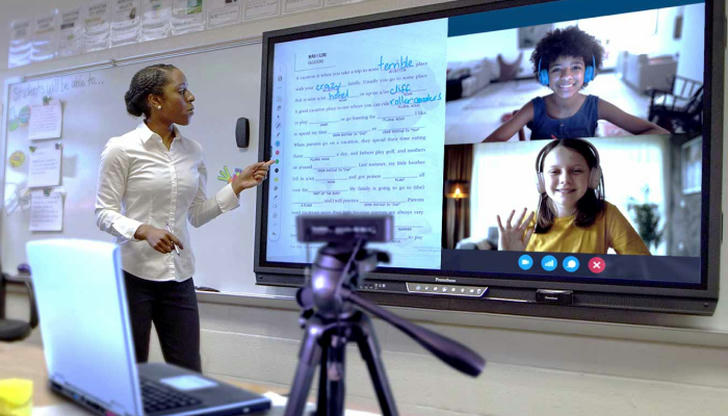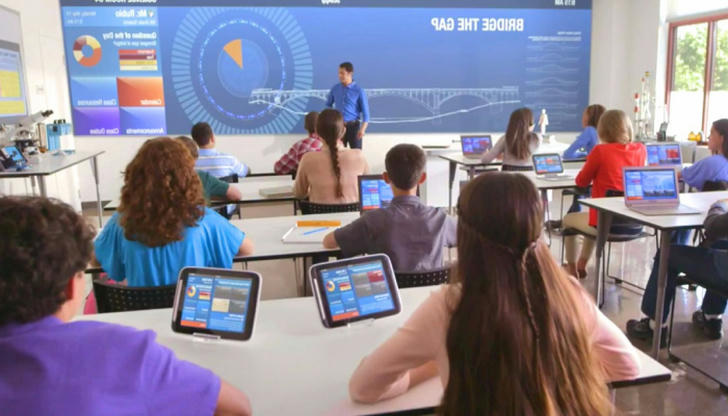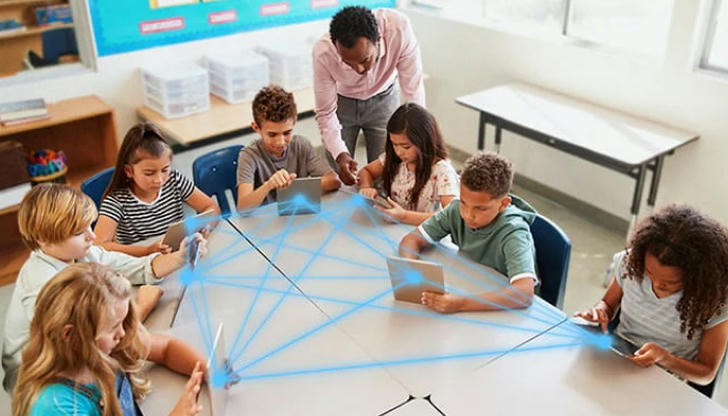The Evolution of Education in the 21st Century: Challenges, Innovations, and Opportunities

Education is the cornerstone of human development and societal progress. It shapes individuals, communities, and nations, providing the necessary tools for both personal growth and collective advancement. Over the past few decades, the world has witnessed a profound transformation in education, driven by technological advances, societal shifts, and new educational philosophies. In the 21st century, the landscape of education is evolving at an unprecedented rate. This article delves into the key challenges, innovations, and opportunities that have emerged in the world of education today.
The Challenges Facing 21st Century Education
While education has become more accessible and diverse, numerous challenges continue to hinder its effectiveness and inclusivity. These challenges are multifaceted, ranging from disparities in access to education, inadequate resources, and outdated teaching methods, to the impact of technology on learning. Let's examine these challenges in more detail.
- Access to Education One of the most pressing issues in global education is unequal access. While developed nations have made significant strides in providing quality education to all, many developing countries still struggle with basic educational access. According to UNESCO, over 260 million children and youth worldwide are not in school, with a disproportionate number in sub-Saharan Africa, South Asia, and conflict-ridden regions. Even in more developed countries, disparities in access to quality education persist. Factors such as socioeconomic status, ethnicity, and geographic location can limit educational opportunities for marginalized groups. Rural areas often face teacher shortages, inadequate facilities, and fewer educational resources, which further exacerbates educational inequalities.
- Quality of Education Access to education does not necessarily equate to the quality of education. Many students around the world attend schools that are poorly funded, lack qualified teachers, and have outdated curricula. A report by the World Bank states that around 600 million children and adolescents are unable to read and understand a simple text by the end of primary school. Inadequate teacher training, a lack of professional development opportunities, and the failure to adapt curricula to the needs of the modern world all contribute to the stagnation of educational quality. As economies and societies become increasingly complex, it is crucial that education keeps pace with these changes, equipping students with the skills necessary to thrive in the workforce and in their communities.
- Technological Disruption and Digital Divide While technology has the potential to revolutionize education, its integration into classrooms has also created new challenges. One of the most significant obstacles is the digital divide—the gap between those who have access to digital tools and the internet, and those who do not. In many low-income regions, students lack the devices and internet connectivity required for digital learning, creating a substantial barrier to educational equity. Moreover, the rapid advancement of technology has introduced new complexities for educators. The pressure to incorporate digital tools into the classroom, often without sufficient training or resources, can overwhelm teachers and hinder their ability to engage students effectively. In this digital age, it is vital that education systems provide adequate training for teachers to leverage technology in meaningful ways, without sacrificing traditional educational values such as critical thinking, creativity, and social interaction.

Innovations in Education: Technology and Beyond
Despite these challenges, the 21st century has seen remarkable innovations in education, many of which are driven by technological advancements. These innovations are reshaping the way we teach and learn, offering new solutions to age-old problems.
- Online and Blended Learning The rise of online education has been one of the most significant educational innovations of the 21st century. Online learning platforms, such as Coursera, Khan Academy, and edX, provide access to high-quality courses from top universities and institutions, allowing learners from all walks of life to engage with academic content in flexible, self-paced environments. Blended learning, which combines traditional classroom instruction with online components, is another innovation gaining traction. Blended learning allows students to take advantage of the benefits of both in-person and online learning, promoting personalized instruction and enabling teachers to use data and technology to better track student progress. For instance, flipped classrooms—where students engage with course materials online before attending class—are gaining popularity. This approach allows teachers to use classroom time for interactive discussions, problem-solving, and collaborative projects, making learning more engaging and effective.
- Artificial Intelligence and Personalized Learning Artificial intelligence (AI) has the potential to revolutionize education by enabling personalized learning experiences for students. AI-powered tools can analyze data on individual student performance, learning styles, and progress, providing customized learning paths that cater to each student's needs. For example, platforms like DreamBox and Knewton use AI to adapt lessons in real-time, providing immediate feedback and support to students. This personalized approach not only helps students learn at their own pace but also ensures that they receive the right level of challenge to foster growth. AI can also support teachers by automating administrative tasks, such as grading and assessments, allowing educators to spend more time engaging with students. Additionally, AI can provide valuable insights into student learning patterns, helping educators identify areas where students are struggling and intervene early.
- Gamification and Interactive Learning Gamification—the use of game elements in non-game contexts—has gained popularity as a way to engage students in learning. By incorporating elements such as rewards, leaderboards, and challenges, educators can create an interactive and enjoyable learning environment that motivates students to stay engaged and improve their skills. Platforms like Kahoot! and Duolingo have successfully used gamification to make learning more fun and interactive. These tools allow students to learn new languages, practice math, or master science concepts through quizzes, challenges, and friendly competition. Gamification not only helps students stay motivated but also fosters critical skills such as problem-solving, collaboration, and resilience. By integrating game mechanics into learning experiences, educators can create dynamic and immersive environments that enhance student engagement and retention.
- Project-Based Learning and Collaborative Education Project-based learning (PBL) is another innovative educational approach gaining popularity in the 21st century. PBL emphasizes learning through the completion of real-world projects that require students to apply knowledge and skills to solve problems. This approach fosters critical thinking, collaboration, creativity, and communication—all skills that are essential for success in the modern workforce. In a PBL classroom, students work on projects that are relevant to their lives, such as designing a sustainable community garden, developing a business plan, or creating a public service campaign. This hands-on, experiential learning not only deepens students' understanding of academic content but also helps them develop practical skills that can be applied in their future careers. Collaborative education—where students work together in groups to solve problems, create projects, or engage in discussions—is also gaining traction. This approach fosters teamwork, communication, and leadership skills, which are essential for success in both personal and professional life.

Opportunities for the Future of Education
The rapid changes in education in the 21st century present exciting opportunities for learners, educators, and policymakers alike. To fully capitalize on these opportunities, however, it is essential to embrace a holistic and inclusive approach to education.
- Global Access to Education Technological advancements, particularly in online education, have the potential to democratize access to learning, offering opportunities to learners in remote or underserved regions. As internet connectivity improves globally, millions of students who previously had limited access to educational resources will be able to access high-quality content and learn from world-class educators. Additionally, partnerships between governments, international organizations, and private companies can help bridge the gap in access to education, providing digital infrastructure and resources to those in need.
- Lifelong Learning In the 21st century, the concept of education extends far beyond childhood and adolescence. Lifelong learning—continuous, self-directed learning throughout an individual's life—has become increasingly important in a rapidly changing job market. As automation and AI reshape industries, workers will need to acquire new skills and knowledge to remain competitive. Educational systems can support lifelong learning by providing flexible learning opportunities for adults, including online courses, certifications, and micro-credentials. This approach will ensure that individuals have the tools they need to adapt to changing career demands and continue personal and professional growth throughout their lives.
- Equity and Inclusion As education becomes more digital and global, it is crucial that efforts are made to ensure equitable access to quality learning for all students. This includes addressing issues such as the digital divide, ensuring that marginalized groups have equal opportunities to participate in educational opportunities, and creating inclusive learning environments that cater to diverse learning styles and needs. Efforts to make education more inclusive, whether through accessible technologies, targeted interventions, or policies that address systemic inequalities, will ensure that education remains a universal human right and a driver of social mobility.

Conclusion
The 21st century has ushered in an era of profound transformation in education. While challenges such as unequal access, quality disparities, and the digital divide remain, the innovations and opportunities that technology, pedagogy, and inclusive policies bring are opening new doors for learners across the globe. Education systems that adapt to these changes and embrace innovation, equity, and lifelong learning will not only prepare students for the complexities of the modern world but will also contribute to the collective advancement of society. As we continue to navigate this rapidly evolving landscape, the future of education holds the promise of greater opportunity, equality, and empowerment for all.
